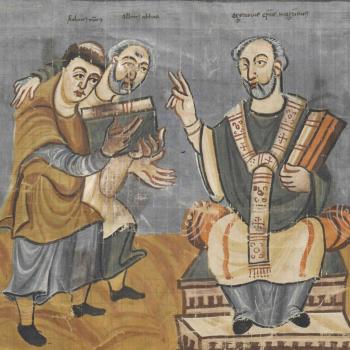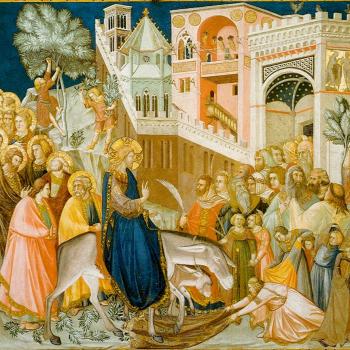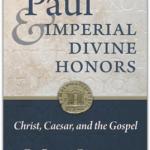Jason Berry is a journalist who works on Catholic issues and clergy sexual abuse. He has recently published an article on abuse issues, in which he attacks my work. He is quite at liberty to make such a criticism, but he cannot do so on the basis of an outrageous mis-representation of what I actually said.
Berry says this:
In 1996, Philip Jenkins… argued in Pedophiles and Priests that the earlier coverage of clergy abuse was a “putative” crisis, one “constructed” by the media and church critics. In 2002, a Boston Globe investigation of such cases ignited a chain reaction in many newsrooms about a deeply rooted culture of churchmen concealing abusers that the Vatican ignored. The “putative crisis” resembled a construction of its author.
What he suggests, then, is that (a) I had claimed that the reported instances of clergy abuse were invented or made up, and that (b) my argument was demolished by the post-2002 media exposés of the scale and severity of clergy abuse. Both statements are flat wrong. Did Berry actually read my book?
Already in the early 1990s, long before the Boston Globe exposés, stories of clergy sexual abuse were becoming very widespread in the US and Canada, usually in a Catholic context. The issue was thus becoming defined as a major social problem. In my book Pedophiles and Priests, I analyzed how the problem was being constructed, a term I defined at considerable length, but not, evidently, in a way that Berry chooses to understand. Contrary to what he implies, “constructed” is NOT synonymous with “invented.”
The term “construction” is a commonplace of social science, and is in fact the primary means of approaching and analyzing social problems. To speak of a problem being constructed makes no necessary statement about the scale of its objective reality, and it certainly does not mean that the issue at question is bogus or mythical. For a social scientist, all social problems are constructed.
As I made clear in the book, there were already by that point hundreds of alleged cases of clergy sexual abuse, most of which were clearly authentic. As I stated explicitly and repeatedly, clergy abuse really occurred, and on a substantial scale.
From Berry’s remarks, you would not guess that in Pedophiles and Priests, I estimated that the offense rate for Catholic clergy with child victims was between 1.5 and 3.5 percent. That is a little lower than the figure postulated by the very wide-ranging 2004 John Jay report (4.2 percent of all clergy), but it was definitely within the ballpark. Incidentally, mine was a far closer estimate than any rival figure offered during that decade.
At that point, though, we had not the slightest idea of the relative scale of the problem, in terms of whether Catholic priests were either more or less likely to abuse children than members of other denominations, or of non-religious professionals who dealt with children. And we still don’t.
So is abuse by secular schoolteachers a “crisis”? If so, is that “crisis” more serious than offenses by Catholic priests? How do we judge that? On what evidence? Very significantly, we still have zero such comparative information about abuse rates among various groups dealing with children. If Berry, or anyone else, has such data, I would be delighted if they would send it to me forthwith. I’ve been looking for twenty years.
By the way, “everybody knows” does not constitute evidence.
Clergy abuse happens, yes – but when does it constitute the kind of pervasive or near-universal problem that is suggested by (subjective) words like ”crisis”? Hence my use of “putative” – something that is reputed, or generally considered to be something.
Remember, in the context of social problems, “crisis” is a purely subjective term, commonly deployed by activists to indicate that the issue they are concerned about is extremely grave. (Journalists also love the term as an empty magnifier). The word has no objective definition, and no relationship with quantitative evidence. If you will pardon the circular definition, a crisis is a set of phenomena that some group believes should be defined as a crisis. If Berry has an objective or universally agreed definition of “crisis,” I’d love to hear it.
In the media, though, no such evidentiary qualms were apparent. Even then, in the 1990s, it was more or less universally agreed that this was a crisis. It was also a distinctively Catholic problem, and one to which Catholic clergy were highly prone. The only debate was which aspect of Catholicism might be responsible – was it a matter of celibacy, of clericalism, of gay clergy… what? (Please note, I am mentioning these theories without necessarily endorsing any of them). As a social theorist would say, that was how the problem was constructed, or the way in which it was contextualized. Or rather, how people came to think in terms of crisis.
I then did what social scientists customarily do in such circumstances, which is to trace the interest groups responsible for representing or constructing the issue in that particular way. I sought to determine the forces that had caused the creation and development of an abuse problem – a “crisis” – in the mid-1980s. Several factors could be identified easily, chiefly the changes in law and litigation that made it possible and profitable to sue churches. Changes in the psychiatric and psychological profession also mattered immensely, and the creation of new interpretations of abuse, its prevalence and effects. And then there were new patterns in the media, a new willingness to go after the once untouchable Catholic church.
I once had a singularly dumb reviewer (not Berry) claim that, aha, Jenkins is blaming clergy abuse on lawyers, journalists and therapists, placing blame everywhere except on the clergy who should really be attacked! Nope, not in the slightest. What I was talking about, very clearly, is not who was committing the abuse, but the new forces that made the perception of crisis possible, and soon, inevitable.
In terms of changing media perceptions, two movements immediately became apparent, both within the Catholic Church itself. Both, in their very different ways, presented the abuse issue as extremely widespread, and heavily stressed and overstressed the relative role of Catholic clergy and institutions. On the one side, I found the church’s liberal and feminist reformists, who had a vested interest in discrediting the traditional structures of priesthood, and celibacy. At the other extreme, ultra-conservative activists emphasized the rampant nature of clergy abuse as a sign of what happened when the church lost discipline, and tolerated homosexuality.
In the decade or so after 1984, both Left- and Right-leaning Catholic publications disagreed with each other about virtually everything, but they concurred absolutely in the belief that clergy abuse was sweeping, systematic, very widespread, and in fact, a crisis. That Catholic writing then emboldened secular media to investigate church abuses. That is how the clergy abuse problem was constructed.
What a pity, though, that I did not pay attention to the enormous upsurge of new investigations of clergy abuse in 2002-2003, and take account of what they might mean for my argument …
Oh wait! I actually did that, again at some length, in my 2003 book The New Anti-Catholicism, which Berry seems never to have heard of. The new information substantially expanded the range of examples on which I could draw, but caused me to make no adjustments to my basic argument or thesis.
Allowing for some points of detail, and more firmly grounded statistics, I stand entirely by what I wrote in 1996.
I have no objection for being denounced for what I said. Don’t target me for things I never said, thought, or wrote.
















